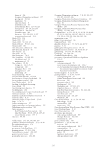8 – Looking after the rivers – a view from nearly 50 000 years of experience 99 collaboration with Traditional Owners. There was also a strong emphasis on the importance of traditional knowledge and its role in informing decision-making, as well as linking into a National Centre for Aboriginal Water Research. For management, we wanted to see co- management arrangements, including the establishment of a Lake Eyre Basin Authority focused on solutions to problems (Table 8.1). We also developed an eight-point declaration, related to Queensland Wild Rivers legislation, known as the Tibooburra Resolution (Table 8.2). This was provided to all political parties in Queensland, emphasising our commitment to protect Cooper Creek, the Georgina River and the Diamantina River, as wild rivers. The Liberal National Party Government in Queensland (2012–15), at the time, led by Premier Campbell Newman, was no longer committed to Wild Rivers and chose to ignore us. The Liberal National Party made three contradictory election promises: retain, renew and then revoke the declaration of Wild Rivers. They ‘shifted the goal posts’. The Liberal National Party Government instead established a new advisory process, forming the Western Rivers Advisory Panel (see Chapter 20), ignoring the fact that the Wild Rivers legislation consultations had finished and all parties had agreed. The new advisory process opened it all up again, allowing potentially vested interests to change the original agreement. I was not invited to be on the new committee. The new committee had virtually the same interests although notable absences of representation of South Australian or environmental interests. This committee was given quite different political riding instructions. They were told to allow irrigation and to ‘ditch’ the Wild Rivers legislation and its declarations for the Channel Country rivers and come up with something new. It was a complete waste of time and money, and served only one purpose – revocation of the Wild Rivers legislation by the Liberal National Party. Table 8.2. The Tibooburra Resolution, consisting of an eight-point declaration from the 4th Lake Eyre Basin Aboriginal Forum, held in Tibooburra on 13–15th September 2011 on protection of rivers in the Lake Eyre Basin by Wild Rivers legislation in Queensland. Resolutions 1. Declare the Cooper Creek, Georgina and Diamantina Rivers as Wild River Areas under the Wild Rivers Act. 2. Commit resources for Traditional Owner rangers in the three river basins under its policy to deliver 100 Indigenous Wild River rangers starting with five rangers (including ranger coordinators) for each of the three river basins – 15 Indigenous rangers in total. 3. Support and resource an Aboriginal organisation which reflects their governance structure to oversee the Wild Rivers Rangers program within the Cooper Creek, Georgina and Diamantina Rivers for the Aboriginal Traditional Owners of these water systems. 4. lncorporate water allocations under each Wild River declaration for Aboriginal water allocation for Traditional Owners to decide its use. 5. Maintain the Aboriginal heritage and cultural landscapes of the three Wild River areas, by supporting management in accordance with the Aboriginal traditions and customs for the areas (joint management). 6. Exclude coal seam gas and shale gas projects, along with other mining and resource extraction, from the High Preservation Areas and Special Floodplain Management Areas and regulate coal seam gas and shale gas activities in the Preservation Areas. 7. Ensure sustainable pastoral activity in the Wild River areas by committing land protection officers to monitor and restrict overstocking. 8. Call on the South Australian/New South Wales/Northern Territory governments to support the protection of the Lake Eyre Basin region with a commitment to a Wild River-type legislation.
Downloaded from CSIRO with access from at 216.73.216.191 on Nov 29, 2025, 8:43 AM. (c) CSIRO Publishing

















































































































































































































































































